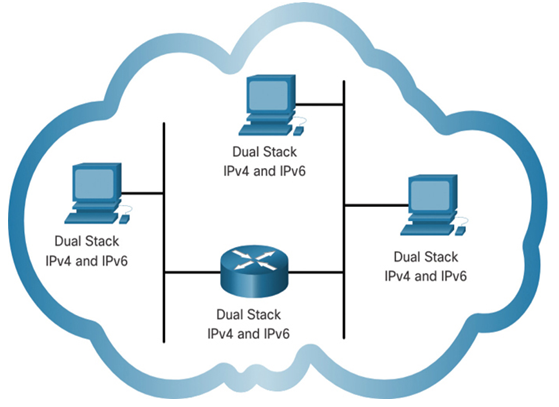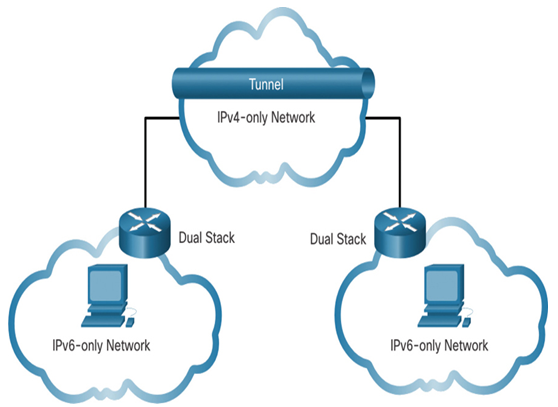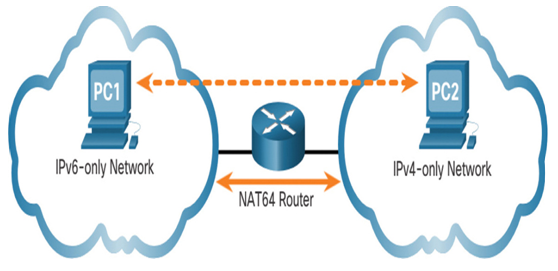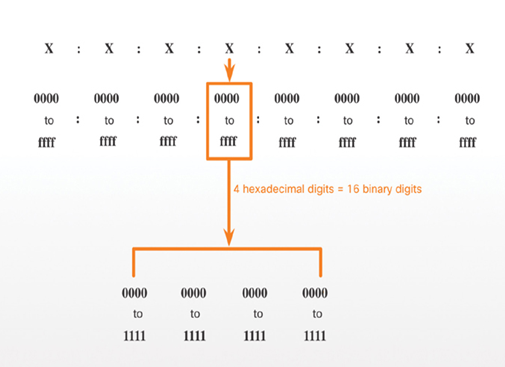The internet of today is significantly different than the internet of past decades. The internet of today is more than email, web pages, and file transfers between computers. The evolving internet is becoming an Internet of Things (IoT). No longer will the only devices accessing the internet be computers, tablets, and smartphones. The sensor-equipped, internet-ready devices of tomorrow will include everything from automobiles and biomedical devices, to household appliances and natural ecosystems.
With an increasing internet population, a limited IPv4 address space, issues with NAT and the IoT, the time has come to begin the transition to IPv6.
IPv4 and IPv6 Coexistence (10.1.2)
There is no specific date to move to IPv6. Both IPv4 and IPv6 will coexist in the near future and the transition will take several years. The IETF has created various protocols and tools to help network administrators migrate their networks to IPv6. The migration techniques can be divided into three categories:
Dual stack allows IPv4 and IPv6 to coexist on the same network segment. Dual stack devices run both IPv4 and IPv6 protocol stacks simultaneously. Known as native IPv6, this means the customer network has an IPv6 connection to their ISP and is able to access content found on the internet over IPv6.

Figure 10-2 Dual Stack Topology
Tunneling is a method of transporting an IPv6 packet over an IPv4 network. The IPv6 packet is encapsulated inside an IPv4 packet, similar to other types of data.

Figure 10-3 Tunneling Topology
Network Address Translation 64 (NAT64) allows IPv6-enabled devices to communicate with IPv4-enabled devices using a translation technique similar to NAT for IPv4. An IPv6 packet is translated to an IPv4 packet and an IPv4 packet is translated to an IPv6 packet.

Figure 10-4 NAT64 Topology
Note
Tunneling and translation are for transitioning to native IPv6 and should only be used where needed. The goal should be native IPv6 communications from source to destination.
Check Your Understanding – IPv4 Issues (10.1.3)
Refer to the online course to complete this Activity.
This topic will discuss the representation of IPv6 addresses.
Hexadecimal Number System (10.2.1)
Before you dive into IPv6 addressing, it’s important that you know that IPv6 addresses are represented using hexadecimal numbers. This base sixteen number system uses the digits 0 to 9 and the letters A to F:
0 1 2 3 4 5 6 7 8 9 A B C D E F
In IPv6 addresses, these 16 digits are represented as hextets (discussed next) allowing us to represent these massive addresses in a much more readable format.
IPv6 Addressing Formats (10.2.2)
The first step to learning about IPv6 in networks is to understand the way an IPv6 address is written and formatted. IPv6 addresses are much larger than IPv4 addresses, which is why we are unlikely to run out of them.
IPv6 addresses are 128 bits in length and written as a string of hexadecimal values. Every four bits is represented by a single hexadecimal digit; for a total of 32 hexadecimal values, as shown in the figure. IPv6 addresses are not case-sensitive and can be written in either lowercase or uppercase.

Figure 10-5 16-bit Segments or Hextets
